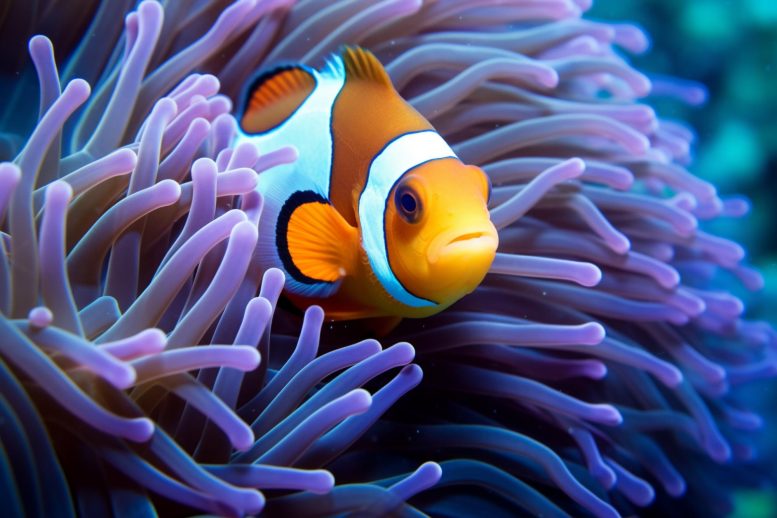
Clownfish, famous for their vivid colors and unique symbiotic relationship with sea anemones, have served as a model organism for studying adaptive radiations. Despite their popularity, the genetic basis and evolutionary mechanisms behind their extraordinary diversification have largely remained unexplored until recently. A new study brings fresh insights into the genomic structure and evolutionary mechanisms that have enabled clownfish to diversify and thrive in various ecological niches.
Clownfish, famous for their vibrant colors and unique symbiotic relationship with sea anemones, have long fascinated scientists and nature enthusiasts. They also serve as a promising model organism for studying adaptive radiations, as their interactions with sea anemones appear to have triggered their rapid diversification into 28 species.
Nevertheless, until recently, the genetic underpinnings and evolutionary mechanisms of this remarkable radiation were largely unexplored. A recent study in Genome Biology and Evolution titled “Insights into the Genomics of Clownfish Adaptive Radiation: the Genomic Substrate of the Diversification” brings fresh insights into the genomic structure and evolutionary mechanisms that have allowed clownfish to diversify and flourish in a variety of ecological niches.
The research, carried out by Anna Marcionetti and Nicolas Salamin from the University of Lausanne, compared the genome sequences of ten clownfish species. They grouped these species into five pairs based on phylogenetic relatedness. Each pair contained one generalist clownfish species, which can associate with multiple sea anemone hosts, and one specialist species that inhabit just a single species of anemone. This unique design let the scientists investigate parallel and convergent evolution following the clownfish radiation.
“Adaptive radiations have always interested me because they can help us understand the mechanisms behind the origin of species,” stated Salamin. “Being able to combine new genomic resources to study in detail the genetic mechanisms of the clownfish radiation is exciting because it can help us understand how this iconic group has evolved and how species have adapted to sea anemones, which is such an intriguing mutualistic interaction.”
The study’s findings suggest that hybridization between clownfish lineages significantly influenced their evolutionary paths. Furthermore, the researchers observed a genome-wide acceleration in evolution among clownfish, with over 5% of all genes found to be under positive selection. This includes several genes potentially linked to the unique size-based hierarchical social structure in clownfish societies. In these societies, the breeding female and male are the largest and second-largest individuals, respectively, with non-breeders becoming gradually smaller as the hierarchy descends.
Genes under positive selection in clownfish included somatostatin, which may control growth related to this size-based social structure; the gene NPFFR2, which may influence growth by regulating food intake and appetite; and the receptor for isotocin, which modulates social behavior.
Positively selected genes also included those involved in adapting to different ecological niches. For example, rhodopsin, a gene that allows for fine-tuning of the visual system at different depths, and the duox gene, which regulates the formation of the white stripes that make clownfish distinctly identifiable. These findings suggest that the accelerated evolutionary rates observed in clownfish may correlate with the emergence of their unique social and ecological adaptations.
Intriguingly, the study also found that generalist clownfish species, which can associate with up to ten different anemone hosts, show faster evolutionary rates than specialist species that inhabit just one species of anemone. This could reflect the more diverse or dynamic environments to which the generalists must adapt. Moreover, the researchers discovered genes with parallel patterns of relaxation or intensification of purifying selection in specialist or generalist species, indicating parallel evolution of generalists and specialists to similar ecological niches.
While these findings are fascinating, the authors recognize the challenges of linking these results to clownfish phenotypes and the need for further research to fully describe clownfish ecology and functional traits.
“To obtain a full understanding of the radiation of clownfish, it will be essential to achieve a comprehensive characterization of their ecology and functional traits. Nevertheless, this study suggests candidate genes and pathways that may be involved in diversification of the group, providing valuable hints for future functional research.”
In addition, the results of this study can be used to inform future marine conservation and management efforts as they relate to clownfish populations. Understanding clownfish’s genetic adaptations to their environment, including their social structures and interactions with sea anemones, can assist in the development of targeted conservation interventions. These interventions could help mitigate the impacts of environmental stressors and promote the long-term survival of clownfish populations.
This study highlights the importance of considering the genetic aspects of a species’ biology when formulating conservation plans and underscores the need for continued research and conservation efforts to safeguard these iconic marine species.
Reference: “Insights into the Genomics of Clownfish Adaptive Radiation: The Genomic Substrate of the Diversification” by Anna Marcionetti and Nicolas Salamin, 25 May 2023, Genome Biology and Evolution.
DOI: 10.1093/gbe/evad088

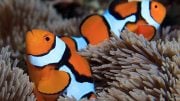
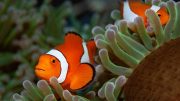

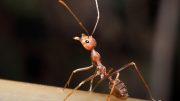
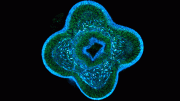
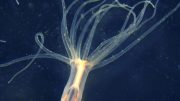

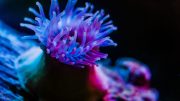
Be the first to comment on "Clownfish Evolution: A Genetic Tale of Adaptation and Survival"